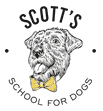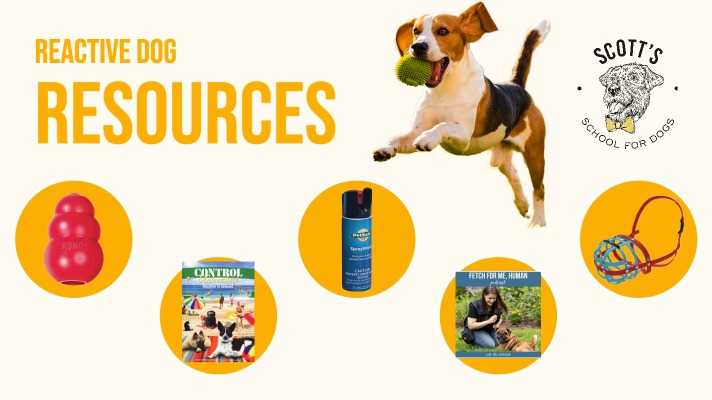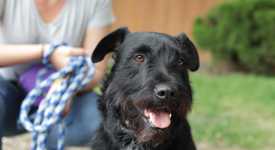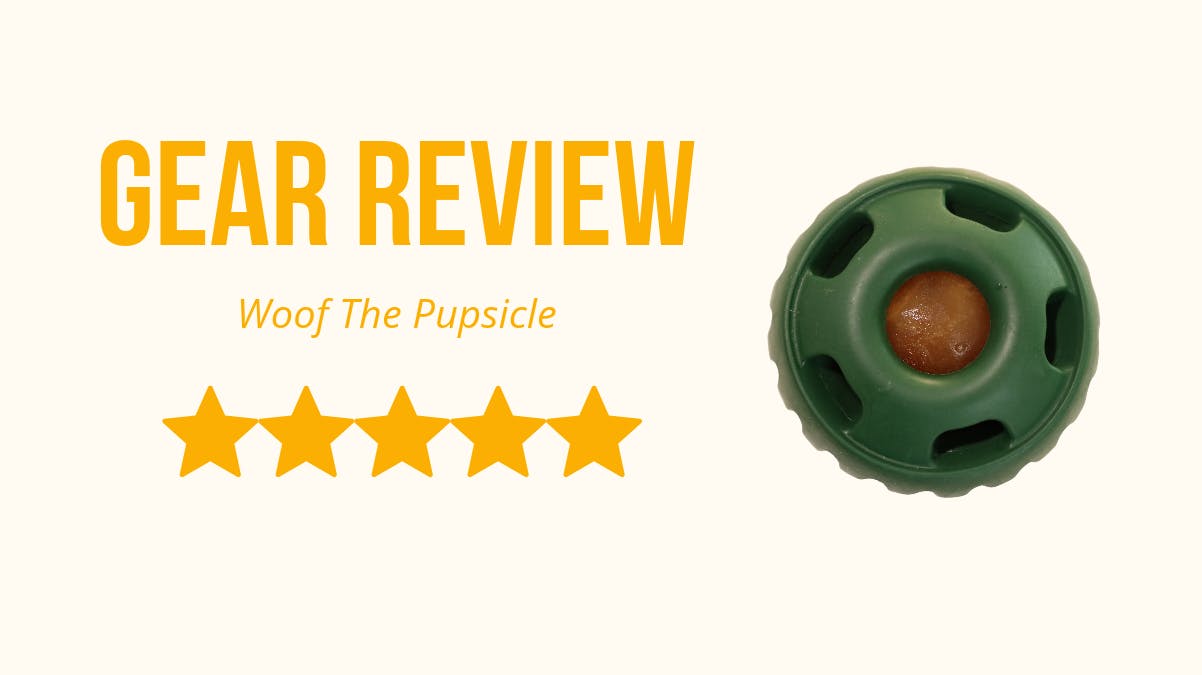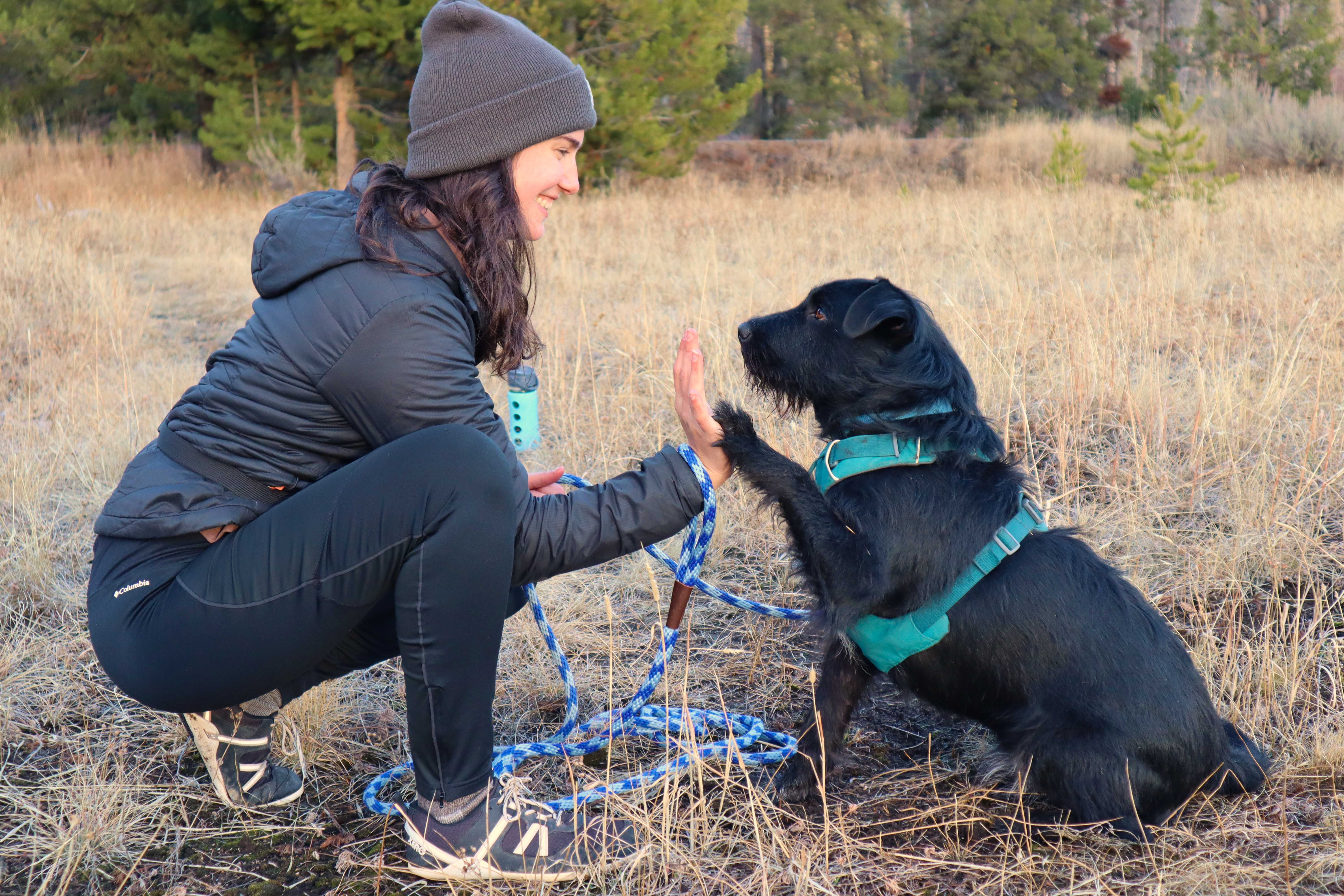Get Your Free Reactive Dog Masterclass
Unlock the secrets of rehabilitating your reactive dog with this masterclass video
Learning how to manage and train your reactive dog can be really, really, really hard. And the fact that the internet is full of so much contradictory information just adds to the frustration and confusion. So, we’ve compiled a list of resources—gear, books, articles, etc—that our certified dog trainer (and reactive dog guardian herself) suggests. Everything on this list will help you in your reactive dog rehabilitation journey.
Keep in mind that this is a living document. We will continue to update it as we discover and use more resources.
Disclosure: some of the links in this blog are affiliate links. We receive a small commission for purchases made through these links at no extra cost to you. This helps support us and allows us to continue to put out free content to help you and your pup. Thanks for your support!
Gear & Tools
Harness:
Balance Harness Buckle-Neck
Why use this harness: It’s adjustable, so you can ensure it properly fits your dog (even if they are shaped differently than other dogs. Corgis, anyone?) Plus, it doesn’t chafe, choke, or restrict your dog’s movement! Finally, it also has a front clip, which is a REALLY helpful tool when teaching your dog not to pull, and for controlling your dog if—let’s be real, when—they lunge at other dogs.
The Perfect Fit Harness
Why use this harness: The harness isn’t restrictive, allowing for freedom of movement. Plus, the shape of the front of the harness ensures that any pulling force is evenly distributed through the chest rather than the soft tissues of the neck and throat. There are also lots of sizing options and mix-and-match components, so you can find a fit that works best for your pup.
Ruffwear Front Range Dog Harness
Why use this harness: This harness allows full range of motion and has both a front and back clip you can switch between depending on your needs. There are also multiple adjustment points for an optimal fit.
Muzzle:
Basket Muzzles:
These types of muzzles allow your dog to pant, eat, and drink! Avoid muzzles that keep your dog's mouth fully closed—like grooming muzzles—which can be dangerous if worn for long periods of time.
Our favorite basket muzzles:
Baskerville Ultra Muzzle — BUY IT
Bumas — BUY IT
Dean & Tyler — BUY IT
Trust Your Dog — BUY IT
JAFCO — BUY IT
Long Leash:
BAT Leash 15 Feet
Why use this leash: If you want a long leash for decompression walks—or to do BAT (Behavior Adjustment Training) setups with your dog—this leash is a great option. It easily slides through your breaking hand, is well made, and is waterproof. Note that you should only use a long leash if you have the proper handling skills (which you can learn from Grisha Stewart’s BAT 2.0 book or website).
High Tail Hikes 15 Ft Sport Leash
Why use this leash: A 15 ft leash allows your dog to move, but still gives you control. (Anything longer can be tough to manage on walks.) This one from High Tail Hikes has a locking carabiner for added safety. You can also customize it with different types of handles and extra features. Make sure you buy the proper size for your dog, they have small, medium, and large thicknesses available. Link goes to medium size.
Use code SCOTT10 for 10% off your purchase
Safety:
Harness to Collar Safety Strap
Why use this strap: It can be scary when your dog reacts, and especially scary if your dog has even managed to wiggle out of her harness or your leash clip becomes detached during a reaction (or, honestly, ever!). This safety strap adds extra protection by hooking your leash to your dog’s collar, ensuring that your dog will still be attached to you if one snap fails.
Use code SCOTT10 for 10% off your purchase
Pet Safe Spray Shield
Why use this: If you feel like a fight is about to happen between your dog and another dog (perhaps an off-leash dog that ran up to him/her) then you can use this spray shield to (hopefully) stop the situation. It’s a citronella spray, so it won’t harm either one of the dogs, just deter one or both of them. Once you release the spray, do your best to get out of the situation asap. Keep in mind that this is a safety tool, not a training tool! This has not been designed to change your dog’s behavior in any way, so please don’t use it as such.
Enrichment
Enrichment is so important for all dogs, but particularly our reactive dogs who may be limited in what they can do at certain points in their lives (unable to go on long walks, for example). Plus, enrichment helps our dogs relieve stress, which can help decrease reactive behaviors!
You can always do DIY enrichment activities with your dog—scattering food in the grass, stuffing toilet paper rolls with treats, putting food in a muffin tin and covering the holes with balls, putting treats inside cardboard boxes, etc. But if you would like to buy some gear to help increase the mental enrichment in your dog's life, here are some suggestions:
Kong Wobbler
This toy decreases boredom by making your dog problem-solve in order to get a food reward. Plus, the food frequently scatters, which facilitates your dog's natural desire to forage. Use it instead of a bowl at meal times.
Snuffle Mat
Snuffle mats help satiate your dog's desire to forage. You can use it during meal times.
Puzzles
Dogs enjoy problem-solving. Studies have even indicated that they get the same "I DID IT!" feeling as humans when we complete a difficult task. These puzzles have been carefully designed to work with natural dog behaviors, such as nosing or pawing. There are also different levels you can buy depending on your dog's experience.
Digestible Chews:
Dogs love to chew! And chewing is known to help decrease anxious behavior. Give them appropriate chews, so they can satiate that natural desire without ruining your shoes. It's best to avoid rawhide, which has digestive risks.
Non-Digestible Chews:
You can use specially designed toys to help satiate your dog's natural desire to chew. These can be more cost-effective than digestible chews if you're dog is a big chewer.
Clicker
A clicker helps us communicate with our dogs that they did something right and are going to earn a reward for it. Teaching dogs tricks using a clicker can be very mentally stimulating and enriching for them!
Kong
The Classic Kong facilitates natural dog behaviors of chewing, licking, and problem-solving. Check out Kong's website for ideas on how to stuff your Kong. The brand also sells excellent chew and treat dispensing toys.
Kong Duratreat Ring
This toy from Kong acts as both a puzzle and a chew. Out of all the enrichment toys I offer my client dogs—puppies, shelter dogs, reactive dogs, calm dogs—this is the most universally beloved.
LickiMat
Licking is a natural dog behavior that can be calming for our dogs. You can also use a lickimat during bath time or at the vet to help keep your dog happy and relaxed. Smear your dog's favorite spreadable treat and then freeze your lickimat to make it last longer.
Websites
Dr. Jen’s Dog Blog
About the website: Veterinarian Jennifer Summerfield is a member of the American Veterinary Society of Animal Behavior. This is her blog, where she writes a lot about “problem” and reactive dogs. A few specific articles you might enjoy: Understanding Leash Reactivity, Why Avoiding the Problem is Okay, and A Training Plan for Leash Reactivity.
Why the website is helpful: Her blog is full of A TON of amazing information that’s really easy to digest/understand. Her writing style is very conversational.
Fear Free Happy Homes
About the website: Founded upon the mission of preventing and alleviating fear, anxiety, and stress in pets, Fear Free® provides online education to veterinary professionals, pet professionals, animal welfare communities, and pet owners. Pet professionals can be certified through Fear Free.
Why the website is helpful: They have so much information on understanding dogs, dog behavior, training games, and more. In fact, they even have a behavior problem-solving tool kit with short videos describing how to solve common unwanted behaviors.
@ The_Toby_Project
About the website: This is an Instagram page run by reactive dog guardian, Kayla, who has been using positive reinforcement to help rehabilitate her pittie, Toby.
Why the website is helpful: Kayla shares SO MUCH of her journey, including the wins and the hard times, helping you feel less alone. Plus, she shares a ton of amazing resources and information, all reputably sourced. Finally, Toby has made huge strides with R+, which can be motivating when you’re feeling stuck on your journey.
The Muzzle Up Project
About the website: The Muzzle Up Project is basically an advocacy group, trying to teach the public that muzzles are an amazing management tool when used correctly.
Why the website is helpful: If you have a reactive dog, it’s a good idea to seriously consider muzzle training him or her. Not only will a muzzle keep everyone safe, but it will also reduce your anxiety knowing that it’s unlikely that something bad will happen. The Muzzle Up Project explains, in detail, how to properly train your dog to wear a muzzle—and how to keep them excited about their muzzle after initial training. They also have great recommendations for muzzles.
Quirks: The website isn’t updated regularly (or, really, at all). They’re mostly just active on social media now.
The Other End of the Leash Blog
About the website: Patricia McConnell, Ph.D. (author of the book The Other End Of The Leash) is an internationally renowned Certified Applied Animal Behaviorist (CAAB). Her blog is all about the behavior of people and dogs.
Why the website is helpful: Her posts are full of information that specifically pertain to reactive dog guardians. Her writing is easy to digest and, surprisingly, her commenters are great! The search function also works well, so you can easily sort through her blog.
Dr. Pachel
About the website: Certified Veterinary Behaviorist, Dr. Christopher Pachel, discusses dog training and behavior modification. His website has articles, videos, and podcasts that take deep dives into dog-related topics (go to the media tab).
Why the website is helpful: Not only does Dr. Pachel have a deep understanding of dogs and dog behavior, but he comes at it in a judgment-free way. He’s known for saying, “I choose to believe that each and every person is doing the best they can with the tools they have available to them in that moment.”
Journey Dog Training
About the website: Journey Dog Training is run by Kayla Fratt, a Certified Dog Behavior Consultant. She has A TON of blog posts, videos, and podcast episodes on her website, a lot of which relate to reactivity. She also has ebooks, online courses, and one-on-one support that you can buy. Kayla also has a podcast called K9 Conservationists where she discusses conservation detection dogs, if you’re interested in that sort of thing.
Why the website is helpful: While her blog posts aren’t the most detailed, they are a great introduction to specific training concepts, and thus a great place to start.
Quirks: Kayla mostly demonstrates training concepts with her SUPER WELL-TRAINED dog, which can be frustrating when your dog is nothing like that.
Eileen and Dogs
About the website: Amateur (but extremely knowledgable) trainer Eileen Anderson shares her mistakes (see here) as well as her successes with R+ training. She also does a nice job explaining dog behavior and training with very clear and well-thought-out videos and articles.
Why the website is helpful: It’s great to see mistakes and wins! Plus, she does a nice job breaking down training concepts so they are easy to understand.
Sue Ailsby
About the website: Sue Ailsby (a.k.a Sue Eh?) is a wonderful dog trainer who generously shares a ton of information through her website. Her website includes information on her training philosophy, journals of training her service dogs Stitch and Syn, and step-by-step training levels (her ‘new’ training levels are available to buy as books or e-books).
Why the website is helpful: Sue’s basic philosophy is “set your dog up for success by breaking behaviors into tiny steps” and “you get what you reinforce – intentionally or not.” This training approach is ideal for reactive dogs. Best of all, her writing is great and easy to understand.
Paws Abilities
About the website: Minnesota dog trainer Sara Reusche has written excellent posts on behavioral modification and reactivity.
Why the website is helpful: Sara really goes into the nitty-gritty, so you can walk away feeling like you’ve learned a lot. Her blogs are also well-written with personal anecdotes.
Quirks: The blog hasn't been updated in a couple of years.
Online Courses
Fenzi Dog Sports Academy:
BH150: Management for Reactive Dogs
About the course: In this six-week course that’s offered a couple of times per year, Dr. Amy Cook discusses various management techniques to help you get out of sticky situations with your dog — like if you run into a trigger unexpectedly.
Who should take the course: EVERYONE!
Why the course is helpful: You’ve probably heard the advice to keep your reactive dog under their threshold, but that is so much easier said than done. Dr. Amy Cook teaches you a variety of active management techniques for situations where you’ve accidentally exposed your dog to a trigger. That way, you can stop your dog’s undesirable behaviors from being rehearsed, decrease their (and your!) stress, and form new habits.
Quirks: The format of Fenzi classes can be a little frustrating. It’s mostly text-based with short videos that aren’t super well-filmed. It’s also important to follow gold student threads, who interact with Dr. Amy Cook, to get the most out of the classes—and that can be a time suck.
Cost: Bronze: $65 (this is a great level to take this class at), Silver: $130, Gold: $260
BH110: Dealing with the Bogeyman — Helping Fearful Reactive and Stressed Dogs
About the course: In this six-week course that’s offered a couple of times a year, Dr. Amy Cook teaches you how to rehabilitate your fearful dog using play therapy.
Who should take the course: Folks who can afford the $260 Gold Level tuition. Play therapy is complicated, not intuitive, and different for every dog. It can be difficult to get a lot out of the course if you take it at a lower level. Plus, your dog must not have any owner aggression or resource guarding issues.
Why the course is helpful: Dr. Cook developed play therapy while getting her Ph.D. in the human-dog relationship. Social Play—different than what we typically think of as playing with dogs—helps with fear on several fronts:
- It helps you to better understand your dog by reading their body language
- it helps diagnose whether your dog is over their threshold or not
- It (seems to) boost oxytocin levels in your dog, helping reduce their overall stress.
Quirks: The format of Fenzi classes can be a little frustrating. It’s mostly text-based with short videos that aren’t that well-filmed. Play is also complicated and unique to every dog, so it’s really worth paying more to get Amy’s feedback. It will be difficult to get much out of the Bronze level.
Cost: Bronze: $65, Silver: $130, Gold: $260. (You may be able to get away with taking the class at silver, but gold is really where you’ll get the most out of it.)
Instinct Dog Training:
The Leash Reactive Dog Course
About the course: This 4-6 hour self-paced course, created by Sarah Fraser, CDBC, talks about leash reactivity specifically.
Who should take the course: People who have reactive dogs. Even if your dog isn’t only leash reactive, a lot of the same principles will apply.
Why the course is helpful: The course does a great job explaining why leash reactivity is a thing and what your dog may be feeling when they bark/lunge. Your empathy for your dog will likely increase! The course also does a good job of laying out steps you can take at the beginning of your rehabilitation journey.
Cost: Free
A Good Feeling Dog Training:
Reactive Redefined Free Mini-Course
About the course: This mini-course, created by Rachel Harris, CPDT-KA, gives you some tools on how to help get a calmer life with your reactive dog.
Who should take the course: If you just realized your dog is reactive and want to learn some basic tools to help.
Why the course is helpful: This course goes over some basic principles that are great for people at the very beginning of their rehabilitation journey. Rachel does offer a paid course that goes into far more detail and which she works with clients.
Quirks: It’s very short and only covers the very, very basics. The videos aren’t super polished either and can be confusing if it’s the first time you’ve heard of a concept.
Scott's School for Dogs
My Dog is Reactive: Now What?
About the course: I would be remiss not to mention my own reactive dog video course! The course features 29 videos with 4+ hours of content, as well as ten homework documents and 4 trackers. It walks you through everything you need to know after you've just made the devastating discovery that your dog is reactive.
Who should take the course: People who know their dog is reactive, but aren't yet sure what to do about it. It can also work for people who have been trying to train their reactive dog, but aren't seeing progress.
Why the course is helpful: I tried to include everything you need to know about reactivity—and nothing extra—in easy-to-understand videos. I break down all training behaviors using my own reactive dog as an example (there are even some #reactivityinreallife moments). You also have access to the course for life, so you can get a refresher anytime you need it.
Quirks: Some of my jokes are definitely a little cheesy.
Podcasts
Fetch for Me, Human
About the podcast: Vet tech turned dog trainer, Alix Mitchell, exclusively talks about all things reactive dogs in this podcast — from training tips to human anxiety that develops in reactive dog owners. She talks about reactivity from a training standpoint, but also as someone who has a very reactive dog herself.
Why the podcast is helpful: Alix completely understands what it is like to train, manage and rehabilitate a reactive dog because she lives it with her dog, Buster. While he’s mostly rehabilitated, he’s still reactive. So, she gets it. She has training tips and techniques but also understands that we all live in the real world. Her podcast is a relaxing, non-judgmental place to learn all about dogs and reactivity. She also has an Instagram page.
Disorderly Dogs (the pawdcast)
About the podcast: Rachel Harris, CPDT-KA, specializes in reactive dogs. She even has an online course called Reactive Redefined that you can take with a cohort of other reactive dog guardians. So, her podcast is about all things reactive dogs and dog behavior. (Her free mini-course is listed above under courses).
Why the podcast is helpful: Rachel discusses topics that directly apply to us as reactive dog guardians. She also features a ton of case studies, which can make you feel less alone on your journey.
Quirks: Episodes can be short, so they don’t get into as much detail as you might crave (alternatively, they’re a great way to get a brief introduction into a topic you can research on your own.) Her case studies can also feel like sales pitches for her course sometimes.
Paws & Reward Podcast
About the podcast: Marissa Martino, CDBC, CTC, discusses dog behavior, dog training, and the human-canine bond. She also has a lot of great (and knowledgeable) guests on her podcast!
Why the podcast is helpful: Marissa discusses some really interesting topics that pertain to us reactive dog guardians, including episodes on the power of relaxation and real behavior change for reactive dogs.
Books
Don't Shoot the Dog: The Art of Teaching and Training — Karen Pryor
About the book: Don't Shoot the Dog will teach you the basics of positive reinforcement training and behavioral training, so you can create training plans that are unique to your dog. Note that the book isn’t specifically about dog training, but about positive reinforcement training in general. You can use concepts from the book to train just about anyone in your life: dog, cat, or human ;)
Who should read the book: Everyone who has a dog, reactive or otherwise!
Why the book is helpful: Understanding the basic principles of positive reinforcement training will help you come up with your own solutions and training plans that will work for YOUR unique dog and situation. The book will also help you understand why positive reinforcement training works and why punishment-based methods don’t.
Quirks: The book was written in the 80s and, thus, can feel a bit dated at times.
Behavior Adjustment Training 2.0: New Practical Techniques for Fear, Frustration, and Aggression in Dogs — Grisha Stewart
About the book: Behavior Adjustment Training walks you through Stewart’s new technique—named Behavior Adjustment Training (BAT)—to help rehabilitate reactivate dogs. Essentially, the technique emphasizes allowing your dog to make his or her own choices through micro-managed “BAT” setups to help alleviate anxiety, anger, or frustration-based reactivity. She also discusses management, puppy training, and more.
Who should read the book: Anybody who has a reactive dog and has some training under their belt.
Why the book is helpful: Stewart explains the concepts of why BAT works really well, helping readers understand what is going on in their reactive dog’s mind (which can feel like such a mystery at times!). There are also great illustrations demonstrating dog body language.
Quirks: The book can feel technical at times like it has been written for other trainers instead of reactive dog owners. It can also feel a little out-of-touch with reality at times. For example, BAT setups require multiple people or dog helpers, but the reality is that it can be difficult to recruit helpers.
Chill Out, Fido! How to Calm Your Dog — Nan Kene Arthur
About the book: Chill Out, Fido is told in two parts. The first part discusses the possible reasons your dog doesn’t have any chill, from genetics to lack of appropriate exposure to stimulus in puppyhood. The second half describes eleven training exercises to help you teach your dog to calm down, relax, and pay attention to you.
Who should read the book: Everyone who has a dog. (Even if they have a “normal” dog!) Especially for folks at the beginning of their reactive dog training journey.
Why the book is helpful: The information at the beginning of the book gives you great insight as to why your dog may be the way he/she is. But the greatest strength of the book is the eleven behaviors you can train your dog to do. Nan Arthur does a great job explaining how to train these behaviors, including what to do when you encounter training roadblocks, and why they are helpful. Each behavior builds off the previous one. These behaviors do make a difference in calming your dog down.
Quirks: This book is great, but it’s not a cure to reactivity.
The New Click to Calm: Solutions for All Dogs in a Challenging World — Emma Parsons
About the book: Emma Parsons explains how to use clicker training to help rehabilitate reactive dogs. She writes that her techniques can help dogs who have more mild behavioral "problems" to dogs with more severe reactivity.
Who should read the book: People with dogs who display "problem" behaviors, like resource guarding or reactivity
Why the book is helpful: Emma Parsons does a great job walking you through all the steps of the training process. She notes that training does not exist in a vacuum and that it's important to look at the full picture of your dog's life, including their access to physical and mental exercise. It's also approachable for people newer to clicker training as she walks you through everything you need to know.
Quirks: The training techniques in the book can be difficult to do correctly. It might help to work with a professional trainer to implement Parson's training plan the right way.
Control Unleashed: Reactive to Relaxed — Leslie McDevitt
About the book: Control Unleashed walks you through lots of training exercises and games that not only help reactive and hyper-aroused dogs learn to chill out, but start a conversation with them too. McDevitt is one of the pioneers of conversational training, a style of training that emphasizes dog-handler communication and interaction.
Who should read this book: Anyone who deals with hyperarousal or reactivity in their dogs. It's an easier read if you are familiar with the training games McDevitt wrote about in her first book, Control Unleashed: Creating a Focused and Confident Dog.
Why the book is helpful: Before McDevitt was a dog trainer, she was a writer—and it shows. The book is written in a very easy-to-understand voice with lots of much-appreciated humor sprinkled in. Plus, the training games and exercises she discusses are unbelievably helpful. (Take a Breath is one of our favorites!) She also has a chapter in the book on giving dogs anxiety medication, in which she pulls in personal anecdotes about going on anxiety medication herself, which is a must-read for anyone making that decision for their dog.
Quirks: It's best to read this book if you already have some training knowledge or are familiar with her first book, linked above.
Wag: The Science of Making Your Dog Happy — Zazie Todd
About the book: The book is exactly what it sounds like: Zazie Todd walks readers through how to make their dog happy using a ton of scientific studies to back her up.
Who should read this book: Everyone who has a dog
Why the book is helpful: The book only briefly mentions reactivity, but it's still great for reactive dog guardians to read. One prong of the multi-pronged approach to reactive dog rehabilitation is to help decrease our dogs' overall stress levels and increase enrichment. This book walks you through how to do just that.
Quirks: People really familiar with dogs and dog training will already know a lot of the information covered in the book, so it can feel repetitive. But it is nice to get studies to back up what you already "know."
Canine Enrichment for the Real World — Allie Bender and Emily Strong
About the book: Despite the title, this book is about far more than dog puzzles and playtime. In fact, the authors define enrichment as "learning what our dogs’ needs are and then structuring an environment for them that allows them, as much as is feasible, to meet those needs” (p. 7). So, this book is all about what dogs' needs are and how to go about meeting them in a sustainable way. It's all backed up by peer-reviewed studies.
Why the book is helpful: When we meet our dogs' needs, not only are they happier and far more well-adjusted, their maladaptive behaviors can decrease. That means less barking and lunging. It also may teach you new information on dogs and dog behavior.
Quirks: The name doesn't do a great job of describing just how fantastic and informational the book is!
Other:
What I Wish You Knew About My Reactive Dog (an online article):
Maggie Marton writes about her reactive dog, which might make you feel less alone in your journey.
Kikopup (Youtube channel):
Emily Larlham is an internationally renowned trainer based in California who provides free online clicker-training tutorials. She has a special interest in shy and reactive dogs.
Protocol For Relaxation
The Relaxation Protocol, invented by Dr. Karen Overall, helps dogs (especially reactive and hyper-aroused dogs) learn how to chill in a variety of circumstances. And it’s GAME-CHANGING. If your dog doesn’t know how to calm him or herself down, you should check it out. If you’d like, learn more about it first by listening to podcast episodes on it here or here.
Visit CalmDog (a website we made that walks you through the steps of the protocol, which can be easier to follow than the PDF).
AVSAB Position Statement on Humane Dog Training
This statement from the American Veterinary Society of Animal Behavior explains why they only recommend positive reinforcement-based dog training and lists multiple studies on the potential fallout of punishment (including the fact that punishment can make reactive dogs more dangerous), as well as the efficacy of both kinds of training.
Alpha Dog Myths
An article that breaks down why the alpha theory has been debunked.
